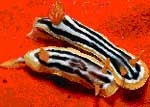Does the electric eel’s voltage affect different organisms in varying ways? Are there other hidden secrets?
The Mystery of Electric Eel Voltage: Why Only Stun Adult Crocodiles?
Electric eels generate electrical voltage through specialized organs, primarily for hunting and self-defense. Their ability to deliver shocks typically ranges from 200 to 600 volts and can be adjusted depending on the situation. For smaller prey such as small fish or insects, electric eels can release lower voltages sufficient to stun them. However, for larger prey or adversaries like crocodiles, electric eels will emit higher voltages to ensure that a single electric shock can effectively incapacitate the target.

The surface of the electric eel’s body is covered with a special layer of cells called electrocytes. These electrocytes contain a large number of ion channels and pumps that can generate electric currents in response to stimuli from the external environment. When the electric eel perceives a threat or detects prey, it uses these electrocytes to produce powerful electric shocks for self-defense or hunting.
However, why does the electric shock from an electric eel only cause temporary dizziness in adults? This relates to the physiological structure and nervous system of the human body. Adults have a more complex body and a more developed nervous system than small fish or insects. When the electric eel delivers a shock, the electric current spreads through the nervous system, causing brief muscle spasms and neurological disturbances, which hinder normal bodily functions. However, due to the human body’s strong self-recovery capability, adults who are shocked generally only lose consciousness temporarily and do not suffer permanent damage.
In contrast, crocodiles have a simpler body structure and a relatively fragile nervous system. Therefore, when an electric eel releases high-voltage electricity, the current can directly affect the nervous system and internal organs of the crocodile, causing fatal injuries. This explains why electric eels can easily stun crocodiles but can only temporarily incapacitate adult fish.

They can track the location of prey or identify potential threats by sensing weak changes in the electric field in the surrounding water. This electrosensory ability allows electric eels to navigate easily in dark deep-sea environments, find the food they need, and simultaneously avoid dangers.
Electric Shock Characteristics of Electric Eels: Causes and Mechanisms of Discharge of 860V
The electric shock organ of electric eels mainly consists of thousands of electric cells known as electroplaques. These shock cells control the electric shocking ability of the electric eel through neural impulses. When the electric eel senses a potential threat or nearby prey, it quickly releases electrical energy and transmits voltage to the surrounding water. This unique electric shock capability allows electric eels to easily stun prey or repel enemies, playing a crucial role in survival and hunting.
The electric shocking ability of electric eels primarily comes from the concentration gradient of electrolytes in their bodies. A large amount of sodium, potassium, and chloride ions are distributed inside and outside the cells of the electric eel’s body. These ions accumulate and separate through active transport proteins, creating a voltage difference.

The neurons of electric eels have a special structure that can withstand strong electric fields from the surrounding environment and protect nerve signal transmission from interference. In this way, electric eels can maintain normal physiological functions in high-voltage environments and effectively adapt to such harsh living conditions.
When electric eels need to discharge, the shock cells will open ion channels, causing positively charged ions inside to rush outside, while negatively charged ions flow back into the cells, resulting in the electric eel experiencing an electric shock. The voltage difference will suddenly short-circuit, thereby creating a strong electric current. This current spreads through the water and reaches the target’s body via ion conduction in the water, producing a powerful electric shock effect.
The phenomenon of electric shocks from electric eels can also be influenced by external environmental factors. Factors such as water temperature, salinity, and conductivity of the water can affect the electric shock effectiveness of electric eels. Additionally, the physical condition and emotional state of the electric eel can also influence its shocking ability. Therefore, the causes and mechanisms of how electric eels discharge 860 volts of electricity is a comprehensive issue that requires a holistic consideration of multiple factors.

Electric eels generate electricity through specialized generating organs located on both sides of their bodies and are closely connected to the nervous system.
Why Don’t Electric Eels Harm Themselves?
To understand why electric eels do not harm themselves, we need to understand an important part of their body structure – their electric organs. The electric organs of electric eels are located on both sides and in the tail of their bodies, consisting of thousands of high-voltage electric cells. These cells can generate the necessary electric charge and control the release of electrical energy through a specialized nervous system. Notably, the skin surface of electric eels is covered with a special mucus layer that acts as an insulator and can effectively prevent electric charges from entering the electric eel’s body through the skin.
Electric eels can utilize the electric field they generate to sense their surroundings and the position of objects. This sensing ability allows electric eels to easily track prey or avoid potential threats. Through this type of sensing, electric eels can wisely control the timing and method of discharge to avoid harming themselves.

When the electric eel senses a threat from outside or prey, it will discharge electricity to stun or kill the opponent.
Research shows that when electric eels release electrical energy, they control the electrical pathways through a series of neural reflexes and muscle contractions, ensuring that the current only flows through specific parts and does not affect their own body. This precise control allows electric eels to use electrical energy flexibly without worrying about adverse effects on themselves.





















































